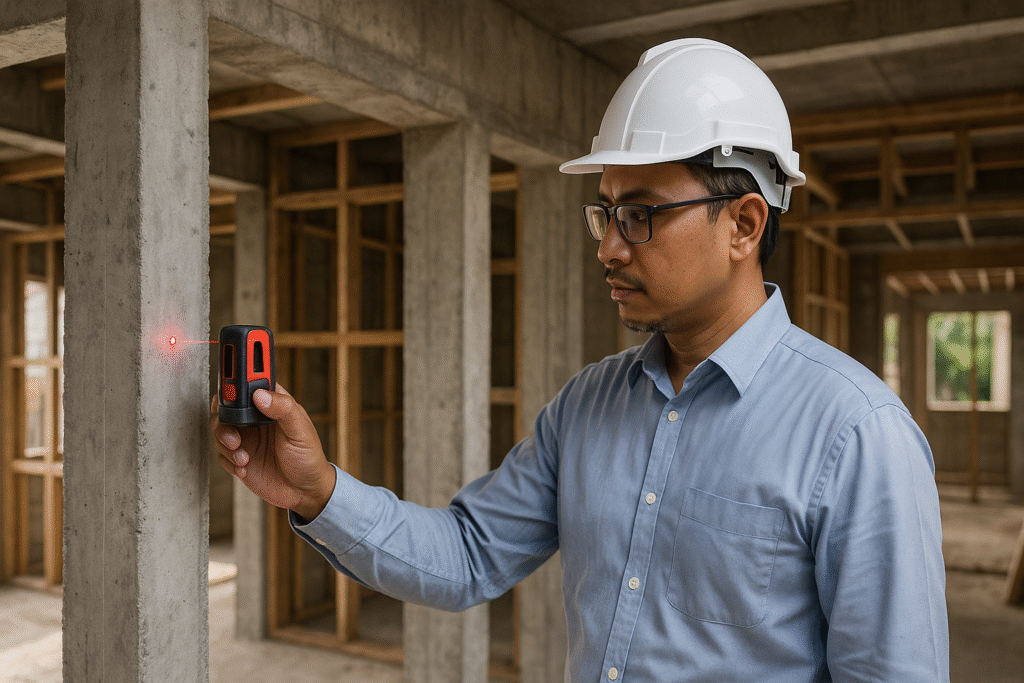Introduction
Renovations can revitalize your living space—but discovering defects after completion can quickly turn excitement into frustration. Whether it’s cracked walls, leaking pipes, or uneven floors, knowing how to respond is crucial. By acting swiftly and smartly—using inspections, proper documentation, and legally sound contracts—you can protect your investment and your peace of mind.
Common Post-Renovation Defects
Structural Issues
- Cracked ceilings or settlement lines often due to poor structural support or concrete curing.
- Uneven or sloped floors from improper screeding or foundation movement.
- Hollow walls or plaster defects stemming from substandard material or workmanship.
Mechanical and Electrical Defects
- Exposed cables, flickering lights, or overloaded sockets—dangerous electrical issues.
- Low water pressure, leaking taps, or misaligned pipes, often a result of rushed MEP installations.
Aesthetic and Finishing Problems
- Peeling or bubbling paint showing moisture or poor surface prep.
- Uneven tile alignment or cracked edges, usually from rushed tiling or cheap adhesive.
- Misaligned cabinetry or malfunctioning fixtures, likely from improper installation.
First Actions to Take If You Spot a Defect
Document Everything
Capture timestamped, multi-angle photos and videos. Keep all receipts, design drawings, and renovation documents carefully organized.
Review Your Renovation Contract
Check for clauses detailing:
- Quality standards
- Defect Liability Period (DLP)
- Remedies and penalties
Communicate with Your Contractor
Send a polite written notice outlining the defect, attach visual evidence, and request rectification within a reasonable timeframe. Keep all correspondences stored.

The Value of Third-Party Inspections – Before, During, and After Renovation
Why Inspections During Construction Matter
Catching issues early—during key stages like structural framing, waterproofing, concrete pouring, and M&E work—saves time, money, and stress. For example:
- Concrete quality issues can be unearthed with slump tests and cube strength tests (7‑ and 28-day), as described in Malaysian Standards (MS 26/30).
- These early checks prevent hidden defects and save on costly repairs later.
Importance of Keeping Records Before and After Renovation
- Pre-renovation photos establish a baseline of existing conditions.
- Milestone documentation (e.g., framing, waterproofing, M&E rough-ins) tracks progress and ensures accountability.
- These records are invaluable for insurance claims, resale, or resolving disputes.
Legal Protection Using Third-Party Inspection Reports
Attach inspection reports—by professional firms like Pro Inspect Solution—to your renovation contract to legally enforce:
- Work Quality Standards: Tolerances for alignment, finishes, material durability, concrete strength, tile adhesion, etc.
- Scope of Work Clarity: Confirm project scope, flag unauthorized changes, and detect material substitutions.
- Material & Component Verification: Ensure compliance with SIRIM/ISO standards and approved specs.
- Defect Liability Period (DLP) Enforcement: DLP begins upon certified completion, holding contractors accountable.
- Dispute Resolution Procedures: Third-party reports serve as unbiased evidence for tribunals or court cases.
Role of Trusted Professionals
Firms like Pro Inspect Solution specialize in Malaysian construction and legal standards, offering documentation that protects homeowners and ensures workmanship quality.
Learn more about Pro Inspect Solution
What to Do When Contractors Don’t Cooperate
Escalating the Matter Professionally
- Issue a formal letter of demand referencing inspection reports.
- If ignored, consult a quantity surveyor or construction lawyer to review your legal rights.
Legal Remedies and Consumer Protection
- Lodge a claim at Malaysia’s Tribunal for Consumer Claims (TTPM)
- Use third-party reports as admissible proof in tribunal or court proceedings.
Preventing Renovation Defects from the Start
Vetting and Choosing the Right Contractor
- Check for CIDB registration, client reviews, and completed projects.
- Ask for references and verify workmanship quality.
Structuring a Legally Sound Renovation Contract
Include clarified clauses covering:
- Work timelines and milestones
- DLP duration and conditions
- Authority to include third-party inspection reports
- Payment phases tied to quality checks and deliverables
Conducting Routine Site Supervision and Third-Party Inspections
Regular walkthroughs and expert inspections during key phases—especially concrete placement and framing—ensure timely detection of issues and adherence to standards.
Conclusion
Spotting defects after renovation can be stressful, but with proper documentation, expert inspections, and legally tight contracts, you’re equipped to act confidently. Stay proactive—inspect early, document thoroughly, and enforce your rights—to ensure your renovation delivers the quality and value you deserve.
FAQs
Q1: What’s a typical defect liability period in Malaysia?
Usually ranges from 6–12 months, but check your specific contract.
Q2: How do I legally use an inspection report?
Attach it to your contract or as a contract annex. Treat the report as official evidence for enforcement within the DLP.
Q3: Can I withhold payment if defects are found?
Yes—if the contract stipulates payment tied to milestone inspections. Consult legal counsel before withholding.
Q4: What common defects appear post-renovation?
Structural cracks, MEP failures, paint issues, tile defects, and cabinetry misfits are frequent culprits.
Q5: Is third-party inspection necessary for small projects?
Yes—especially when involving structural, waterproofing, concrete, or MEP work. Even small defects can escalate without proper oversight.


